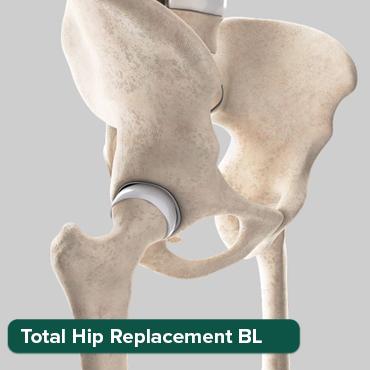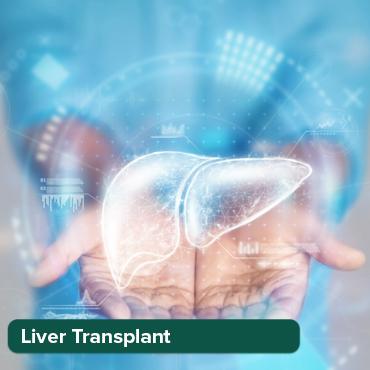
Ayurvedic Treatment for Multiple Myeloma in India
02 Dec, 2023
 Healthtrip Team
Healthtrip TeamMultiple myeloma, a type of blood cancer that affects plasma cells, is a challenging disease that has led many to seek alternative treatments, including Ayurveda. Ayurveda, an ancient Indian system of medicine, offers a holistic approach to health and wellness, focusing on balancing the body, mind, and spirit. In India, where Ayurveda originated, there is a rich tradition of using these practices to support health, including in the context of serious illnesses like multiple myeloma. This guide aims to explore the Ayurvedic perspective and treatment options for multiple myeloma in India.
Before delving into Ayurvedic treatments, it's crucial to understand what multiple myeloma is. It's a cancer of the plasma cells, a type of white blood cell responsible for producing antibodies. This condition leads to a range of symptoms, including bone pain, anemia, kidney dysfunction, and increased susceptibility to infections.
Most popular procedures in India
Symptoms:
This condition can manifest with a variety of symptoms, including:- Bone Pain: Multiple myeloma often causes severe bone pain, especially in the back, ribs, and hips. These pains can be persistent and debilitating.
- Anemia: The cancerous plasma cells can crowd out healthy blood cells, leading to a decrease in red blood cell production, resulting in fatigue, weakness, and pallor.
- Kidney Dysfunction: Myeloma proteins can damage the kidneys, leading to symptoms such as increased thirst, frequent urination, and swelling in the legs and ankles.
- Infections: A weakened immune system due to myeloma can result in recurrent infections, such as pneumonia and urinary tract infections.
- Hypercalcemia: Elevated levels of calcium in the blood can occur, leading to symptoms like excessive thirst, constipation, confusion, and muscle weakness.
- Nausea and Vomiting: Myeloma can cause gastrointestinal symptoms, including nausea and vomiting.
- Weight Loss: Unintended weight loss is a common symptom in multiple myeloma patients.
- Neurological Symptoms: Rarely, myeloma can affect the nervous system, leading to symptoms like numbness, tingling, or weakness in the extremities.
It's crucial to recognize these symptoms early and seek medical attention for an accurate diagnosis and treatment plan.
Wellness Treatments
Give yourself the time to relax
Lowest Prices Guaranteed!

Lowest Prices Guaranteed!
Ayurvedic Perspective on Multiple Myeloma
In Ayurveda, every disease is viewed through the prism of the body's doshas (Vata, Pitta, and Kapha) and the concept of "Ama" (toxins). Although multiple myeloma doesn't have a direct counterpart in traditional Ayurvedic texts, its symptoms and pathophysiology can be understood in terms of doshic imbalances and the accumulation of Ama.
- Doshic Imbalances: Ayurveda believes that imbalances in the doshas can predispose individuals to various diseases. In the context of multiple myeloma, imbalances in the doshas, particularly Vata and Pitta, may play a role. Vata imbalance can contribute to bone pain and weakness, while Pitta imbalance may be associated with inflammation and metabolic disturbances.
- Ama Accumulation: The accumulation of Ama, which represents undigested or toxic substances in the body, is a central concept in Ayurveda. In the case of multiple myeloma, the proliferation of abnormal plasma cells could be seen as a manifestation of Ama. Ayurvedic treatments often focus on eliminating Ama through detoxification and purification techniques.
Ayurvedic Diagnosis
Ayurvedic diagnosis for multiple myeloma involves a holistic assessment of the patient's constitution, current health status, and doshic imbalances. While Ayurveda does not diagnose cancer in the same way as modern medicine, it provides valuable insights into the individual's overall health and the factors contributing to their condition. Here's how Ayurvedic diagnosis may be approached in the context of multiple myeloma:
1. Prakriti Assessment: Ayurveda recognizes that each person has a unique constitution or Prakriti, which is determined by the balance of the three doshas (Vata, Pitta, and Kapha) at the time of their birth. Understanding the patient's Prakriti helps the Ayurvedic practitioner identify their inherent tendencies and susceptibilities to imbalances that may contribute to their condition.
2. Vikriti Assessment: Vikriti refers to the current state of health and doshic imbalances in the patient. The practitioner assesses the patient's Vikriti by observing physical symptoms, analyzing their pulse (Nadi Pariksha), examining their tongue (Jivha Pariksha), and discussing their medical history and lifestyle.
3. Doshic Imbalance Evaluation: The Ayurvedic practitioner evaluates the doshic imbalances that may be contributing to the patient's symptoms. In the context of multiple myeloma, imbalances in Vata and Pitta doshas may be particularly relevant due to their association with bone pain, inflammation, and metabolic disturbances.
4. Ama Assessment: Ayurveda places significant importance on the concept of Ama, which represents toxins or undigested materials in the body. In multiple myeloma, the proliferation of abnormal plasma cells and their byproducts could be considered a form of Ama. The practitioner assesses the extent of Ama accumulation and its impact on the patient's health.
5. Tongue Examination: The tongue is considered a mirror of the body's internal health. Ayurvedic practitioners examine the color, coating, and overall appearance of the tongue to gain insights into the patient's digestive health and doshic imbalances.
6. Lifestyle and Dietary Assessment: Understanding the patient's daily routine, dietary habits, stress levels, and exposure to environmental toxins is crucial. Lifestyle and dietary factors play a significant role in Ayurvedic diagnosis and treatment planning.
7 Pulse Diagnosis: Pulse diagnosis (Nadi Pariksha) is a unique and sophisticated method in Ayurveda. Practitioners assess the patient's pulse at various points on the wrist to detect subtle imbalances and determine the condition of the doshas.
8. Symptom Analysis: Specific symptoms associated with multiple myeloma, such as bone pain, anemia, kidney dysfunction, and susceptibility to infections, are considered in the overall assessment.
Once the Ayurvedic practitioner has gathered comprehensive information through these diagnostic methods, they develop a personalized treatment plan. This plan typically includes herbal remedies, dietary recommendations, lifestyle modifications, and therapies like Panchakarma to address doshic imbalances and remove accumulated Ama. It's essential to remember that Ayurvedic diagnosis is complementary to conventional medical diagnosis and treatment for multiple myeloma, and both should be integrated for comprehensive care. Patients should consult with both Ayurvedic practitioners and oncologists to ensure a well-rounded approach to managing their health.
Ayurvedic Treatment Approaches for Multiple Myeloma
1. Herbal Remedies for Multiple Myeloma
Ayurveda utilizes a range of herbs known for their medicinal properties to complement the treatment of multiple myeloma. While Ayurveda does not claim to cure cancer, these herbs can help manage symptoms, improve overall well-being, and potentially support conventional medical treatments. Here are some commonly used herbs and their effects on multiple myeloma:
1. Ashwagandha (Withania somnifera): Ashwagandha is renowned for its adaptogenic properties, which means it helps the body adapt to stress and maintain balance. This adaptogenic quality can support individuals coping with the physical and emotional challenges of multiple myeloma.
2. Turmeric (Curcuma longa): Turmeric contains curcumin, a bioactive compound with potent anti-inflammatory and antioxidant properties. Curcumin has been extensively studied for its potential anti-cancer effects, including its ability to inhibit the growth and proliferation of cancer cells. It may help reduce inflammation and alleviate some symptoms associated with multiple myeloma.
3. Guggulu (Commiphora mukul): Guggulu is traditionally used in Ayurveda for its detoxifying and purifying effects. It may help remove toxins from the body, including Ama, which can accumulate in multiple myeloma. Guggulu's detoxifying properties can support overall health and well-being during treatment.
4. Tulsi (Ocimum sanctum): Tulsi, also known as Holy Basil, is revered for its immune-boosting properties. Strengthening the immune system can be crucial for individuals with multiple myeloma, as it helps the body defend against infections and maintain overall health.
It's important to note that while these herbs offer potential benefits, they should not be considered a standalone treatment for multiple myeloma. Ayurvedic herbal remedies are typically used as complementary therapies alongside conventional medical treatments. Patients should consult with both Ayurvedic practitioners and oncologists to ensure a coordinated approach to their care.
2. Panchakarma: A Comprehensive Ayurvedic Detoxification and Cleansing Process
Panchakarma is one of the most renowned and effective therapeutic practices in Ayurveda, the ancient Indian system of medicine. This holistic approach to wellness involves a series of treatments designed to cleanse and rejuvenate the body. The term "Panchakarma" translates to "Five Actions" in Sanskrit, as it encompasses five distinct procedures. These treatments are carefully chosen based on an individual's constitution and health condition to restore balance and harmony to the body, mind, and spirit.
The Five Elements of Panchakarma
1. Vamana (Therapeutic Vomiting):
Vamana is a cleansing procedure that primarily targets excess Kapha dosha, which is associated with qualities like heaviness and congestion. To initiate this process, the individual consumes medicated substances that induce vomiting. It helps eliminate toxins, excess mucus, and undigested food from the stomach and upper respiratory tract. Vamana is especially beneficial for conditions like respiratory disorders, allergies, and skin issues.
2. Virechana (Purgation):
Virechana focuses on balancing the Pitta dosha, characterized by heat and acidity. During this procedure, the person ingests purgative substances to facilitate bowel movements and eliminate excess Pitta-related toxins. Virechana is beneficial for digestive disorders, liver conditions, skin problems, and certain psychological issues like anger and irritability.
3. Basti (Enema):
Basti is a cleansing technique that targets Vata dosha, responsible for qualities like dryness, mobility, and irregularity. In this procedure, medicated oils or herbal decoctions are administered through the rectum. Basti helps nourish and lubricate the body's tissues while removing accumulated toxins. It is particularly effective for disorders related to the colon, nervous system, and musculoskeletal system.
4. Nasya (Nasal Administration of Medications):
Nasya involves the application of herbal oils or powders into the nasal passages. This procedure primarily works on the head and upper respiratory tract, making it effective for addressing conditions related to the sinuses, headaches, and mental clarity. Nasya helps balance both Vata and Kapha doshas in the upper body.
5. Raktamokshana (Bloodletting):
Raktamokshana is the most specialized and rarely used procedure among the Panchakarma therapies. It involves the removal of a small amount of blood to eliminate impurities and toxins from the bloodstream. This procedure is considered in specific cases of blood-related disorders, and it should only be performed by highly skilled practitioners.
The Process of Panchakarma
Panchakarma is not a one-size-fits-all approach; it is personalized according to an individual's constitution, imbalances, and overall health condition. The treatment typically consists of three main phases:
1. Purvakarma (Preparatory Phase): This phase involves preparing the body for the main Panchakarma treatments. It includes processes like oleation (external and internal application of oils) and fomentation (heat therapy).
2. Pradhana Karma (Main Procedures): This is the stage where the chosen Panchakarma procedures are administered under the guidance of a trained Ayurvedic practitioner.
3. Paschatkarma (Post-treatment Care): After the main procedures, individuals are advised to follow a specific diet, lifestyle, and herbal supplements to support the body's recovery and maintain balance.
Benefits of Panchakarma
- Detoxification: Panchakarma eliminates accumulated toxins and rejuvenates the body's systems.
- Balancing Doshas: It helps restore balance to the three doshas - Vata, Pitta, and Kapha.
- Improved Health: Many individuals experience relief from various chronic ailments, improved digestion, and enhanced vitality.
- Stress Reduction: Panchakarma treatments have a calming effect on the mind and nervous system.
- Enhanced Immunity: By removing toxins, Panchakarma strengthens the immune system.
Panchakarma is a powerful and ancient practice that offers a holistic approach to detoxification and rejuvenation. However, it should be administered by trained and experienced Ayurvedic practitioners to ensure its safety and effectiveness. Before undergoing Panchakarma, it is essential to consult with a qualified Ayurvedic physician to determine the most suitable treatments based on your individual needs and health condition. When done correctly, Panchakarma can be a transformative journey towards optimal health and well-being, aligning with the principles of Ayurveda's holistic approach.
3. Diet and Nutrition for Multiple Myeloma - An Ayurvedic Perspective
Diet plays a crucial role in Ayurveda, and for individuals with multiple myeloma, adopting a well-balanced and dosha-specific diet can be beneficial. Ayurvedic dietary principles aim to support overall health, balance the doshas, and improve digestion. Here's how an Ayurvedic diet can be tailored for multiple myeloma patients:
1. Balancing the Doshas: Ayurveda categorizes foods into three categories based on their effects on the doshas:
- Vata-Balancing Foods: To alleviate symptoms like bone pain and nervousness associated with multiple myeloma, Vata-balancing foods such as cooked grains, cooked vegetables, and warm, nourishing soups can be recommended.
- Pitta-Balancing Foods: For individuals experiencing inflammation or acidity, Pitta-balancing foods like cooling and mildly spicy foods can help. These include fresh fruits, cucumber, mint, and coriander.
- Kapha-Balancing Foods: Kapha-balancing foods are recommended for those with excess mucus production or congestion. These foods include warm, lightly spiced dishes, and plenty of fresh vegetables.
2. Easy-to-Digest Foods: Individuals with multiple myeloma may experience digestive discomfort due to their condition or treatments. Therefore, Ayurvedic dietary recommendations often emphasize easily digestible foods. This may include well-cooked grains like rice and oats, steamed vegetables, and soupy, warming dishes.
3. Nourishing and Vitalizing Diet: A sattvic diet, which is pure, natural, and vitalizing, is often recommended. This diet focuses on fresh, organic, and unprocessed foods. It includes:
- Fresh Fruits: Especially those that are in season and easy to digest.
- Cooked Vegetables: Steamed or lightly sautéed to enhance digestibility.
- Whole Grains: Such as rice, quinoa, and oats.
- Legumes: When well-cooked and well-spiced for optimal digestion.
- Nuts and Seeds: In moderation, as they provide essential nutrients.
- Dairy: If tolerated and organic, dairy can be a source of nourishment.
4. Hydration: Staying well-hydrated is essential for individuals with multiple myeloma. Warm herbal teas, such as ginger or tulsi tea, can be soothing and supportive. Adequate hydration helps with detoxification and overall well-being.
5. Avoiding Toxins: Ayurvedic dietary guidelines often stress the importance of avoiding foods with additives, preservatives, and chemicals. Fresh and organic foods are preferred to minimize exposure to toxins that can burden the body.
6. Meal Timing: Eating regular meals at consistent times can help regulate digestion and maintain balance in the body. Avoiding heavy, late-night meals is generally advised.
7. Personalized Approach: Ayurveda recognizes that each person is unique, and their dietary needs may vary. Consulting with an Ayurvedic practitioner can help tailor a diet specific to an individual's constitution and imbalances.
It's important to note that while Ayurvedic dietary principles can offer support and improve overall well-being for individuals with multiple myeloma, they should not replace conventional medical treatments. Diet is just one aspect of holistic health, and a comprehensive approach that includes consultation with healthcare providers and specialists is essential for managing this condition effectively.
4. Yoga and Meditation: Supporting Ayurvedic Treatment for Multiple Myeloma
Yoga and meditation are ancient practices deeply intertwined with Ayurvedic treatment, offering a holistic approach to healing that transcends the physical aspects of the body. In the context of multiple myeloma, these practices play a significant role in managing stress, enhancing mental well-being, and fostering a harmonious balance between the body and mind.
Benefits of Yoga
- Improved Flexibility: Yoga asanas (postures) gently stretch and tone the muscles, promoting flexibility, which can alleviate pain and discomfort associated with multiple myeloma.
- Enhanced Circulation: Certain yoga poses facilitate better blood circulation, crucial for delivering nutrients and oxygen to the body's cells, including those affected by cancer.
- Strength and Endurance: Yoga helps build strength and endurance, valuable for cancer patients dealing with fatigue and muscle weakness.
- Stress Reduction: Yoga encourages relaxation through controlled breathing and mindfulness, aiding individuals in managing the stress and anxiety often accompanying a cancer diagnosis.
- Emotional Balance: Regular yoga practice improves emotional resilience and provides inner peace, vital for patients coping with the emotional challenges of cancer.
The Role of Meditation
a. Mind-Body Connection
- Mental Clarity: Meditation practices, such as mindfulness meditation, enhance concentration and mental clarity, enabling patients to make informed decisions about their health and treatment.
- Pain Management: Meditation aids in pain management through focused attention and visualization, reducing the perception of pain and enhancing overall comfort.
b. Stress Reduction
- Stress Hormone Regulation: Meditation techniques regulate stress hormones, particularly beneficial for cancer patients dealing with the physical and emotional toll of the disease.
- Improved Sleep: Meditation promotes better sleep patterns, addressing one of the common issues faced by cancer patients—insomnia.
Pranayama: The Art of Breath Control
Pranayama, the practice of controlling the breath, is an integral component of yoga and meditation, offering numerous benefits for cancer patients:
- Oxygenation: Deep breathing techniques increase oxygen supply to cells, promoting vitality and aiding in the body's natural healing processes.
- Stress Reduction: Pranayama exercises, like Anulom Vilom (alternate nostril breathing), calm the mind and reduce stress, making it easier for patients to navigate the challenges of cancer treatment.
Yoga and Meditation Practices for multiple myeloma
Not all yoga poses and meditation techniques are suitable for everyone, especially those with specific health conditions like multiple myeloma. Therefore, it is crucial for individuals to consult with a certified yoga instructor or therapist experienced in working with cancer patients.
Some yoga asanas and meditation practices that may benefit multiple myeloma patients include:
- Gentle Yoga: Focus on restorative and gentle yoga poses that avoid excessive strain on the body.
- Breathing Exercises: Incorporate pranayama techniques, such as deep belly breathing and Bhramari pranayama (humming bee breath), to manage stress and improve oxygenation.
- Meditation: Practice mindfulness meditation to enhance mental clarity and emotional well-being.
- Yoga Nidra: A deep relaxation practice that can help with insomnia and fatigue.
- Chair Yoga: For patients with mobility issues, chair yoga offers a safe and accessible way to practice.
Yoga and meditation are powerful tools that can complement Ayurvedic treatment for multiple myeloma, providing physical and psychological benefits that support the overall well-being of cancer patients. However, it's essential to approach these practices under the guidance of qualified instructors who can tailor them to individual needs and limitations. When incorporated mindfully into a comprehensive treatment plan, yoga and meditation can contribute to a more balanced and resilient journey through the challenges of multiple myeloma.
5. Lifestyle Changes:
lifestyle changes play a significant role in Ayurveda and can have a positive impact on overall health and well-being. Here's a closer look at the lifestyle recommendations emphasized in Ayurveda:
1. Balanced Lifestyle: Ayurveda emphasizes the importance of living in harmony with nature and maintaining a balanced lifestyle. This includes following daily routines (known as dinacharya) that align with your individual constitution (dosha) and the changing seasons.
2. Adequate Sleep: Getting sufficient and restful sleep is crucial for good health. Ayurveda suggests going to bed and waking up at consistent times, allowing the body to align with its natural circadian rhythms. Adequate sleep helps in rejuvenation and maintaining overall balance.
3. Stress Management: Managing stress is a fundamental aspect of Ayurvedic health. Chronic stress can disrupt the balance of doshas and contribute to various health issues. Ayurveda recommends stress reduction techniques such as meditation, yoga, deep breathing exercises, and relaxation practices.
4. Regular Exercise: Physical activity is essential for maintaining a healthy body and mind. Ayurveda recommends incorporating appropriate exercise into your daily routine. The type and intensity of exercise should be chosen based on your dosha and overall health condition.
5. Dietary Habits: In addition to the specific dietary recommendations mentioned earlier, Ayurveda encourages mindful eating. Eating in a calm and peaceful environment, chewing food thoroughly, and paying attention to your body's hunger and fullness cues are important aspects of Ayurvedic dining.
6. Avoiding Harmful Habits: Ayurveda strongly advises against harmful habits like smoking and excessive alcohol consumption, as these can have a detrimental effect on both physical and mental health.
7. Mindful Eating: Ayurveda places great emphasis on how you eat, not just what you eat. Eating mindfully, without distractions, and savoring your food can improve digestion and overall well-being.
8. Seasonal Adjustments: Ayurveda recognizes the influence of seasonal changes on health. Adjusting your lifestyle, diet, and daily routine according to the season can help maintain balance and prevent imbalances related to specific seasons.
9. Environmental Awareness: Ayurveda also considers the impact of your immediate environment on your health. Creating a clean, organized, and harmonious living space can support your overall well-being.
10. Emotional Well-being: In Ayurveda, emotional health is closely linked to physical health. Cultivating positive emotions, nurturing relationships, and practicing gratitude are encouraged for emotional well-being.
It's important to remember that Ayurveda is an individualized system of medicine, and recommendations may vary based on a person's constitution and specific health needs. Consulting with an experienced Ayurvedic practitioner can help you create a personalized plan to incorporate these lifestyle changes into your daily routine for improved health and vitality. Additionally, integrating Ayurvedic principles into your lifestyle can complement conventional healthcare practices to promote holistic well-being.
Choosing the Right Ayurvedic Treatment in India
When seeking Ayurvedic treatment in India, it's important to choose reputable clinics and experienced practitioners. Look for centers that are government-recognized and have a good track record. It's also crucial to maintain open communication with your oncologist and Ayurvedic practitioner to ensure an integrated approach to treatment.
Explore top ayurveda hospitals in India: Ayurveda Treatment in India - Cost, Hospitals, Doctors | HealthTrip
While Ayurveda offers promising avenues for supporting individuals with multiple myeloma, it's important to approach this as a complementary therapy alongside conventional treatments. Ayurveda's strength lies in its holistic approach, focusing on the entire well-being of the patient rather than just the disease. As with any medical treatment, especially for serious conditions like multiple myeloma,
It's essential to consult with healthcare professionals and make informed decisions.
Related Blogs

Unparalleled Medical Care at VPS Lakeshore Hospital, Kerala
Get the best medical treatment at VPS Lakeshore Hospital, Kerala

A Comprehensive Guide to Multiple Myeloma Treatment in the UAE
Struggling to find comprehensive multiple myeloma treatment options in the

A Comprehensive Guide to Crohn's Disease Treatment in India
Is Crohn's disease making life difficult for you or someone

A Comprehensive guide on Myomectomy Surgery in India
Ladies, are fibroids wreaking havoc on your life? Dealing with

A Comprehensive Guide to Autism Treatment in India
Have questions about autism and the specialized treatments available in

A Comprehensive guide to Liver Cancer Treatment in India
Do you have questions about liver cancer treatment options in










